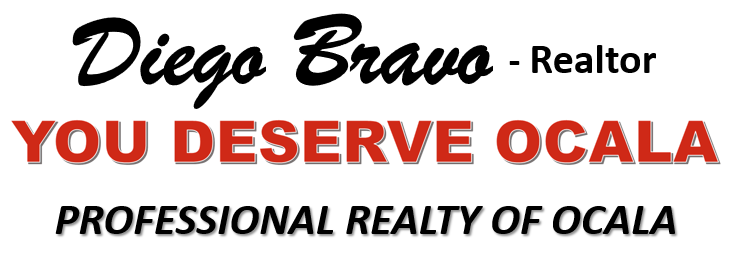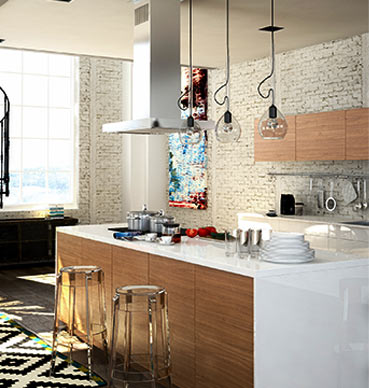THE NASTY TRAP OF OVERPRICING


Pricing real estate is not an easy task for owners wanting to sell a property because of two reasons, at least: First, having their emotions highly involved and, second, not having the proper tools to price a property correctly.
Sometimes, owners wanting to sell their properties by themselves (‘For
Sale by Owner’) offer a real estate for sale far below the market value
because they are not aware of the actual price trends in the area at the time; and,
by doing so, they throw money away unknowingly. Most owners, however, do the
complete opposite. When wanting to sell a property they price it too high, which
often causes both keeping the property (active) for sale much longer than
expected and having to sell it for less than if they had priced it well since
the beginning. The causes that usually lead to this costly mistake include:
a) They have searched on free online sites (e.g., Zillow, Trulia) the asking prices of some properties for sale in their area or have attended open houses nearby. Not only, those asking prices are just that, ‘asking prices’, but also there are other factors that may cause variations in value from property to property, even if they are in the same area: lot size and shape, building size, style (architecture), improvements (e.g., swimming pool, home theater), upgrades (kitchen, baths, floors, etc.), age, current condition, location (e.g., corner, distance from noisy roads, view, etc.).
b) The owners are very attached to their properties because of all the efforts made to have acquired them and the wonderful memories they have created there. Actually, some owners, although wanting to sell a property, say something like: “If someone pays me $XXX, I will sell my property. But will not sell it for less; I would rather die here, instead.”
c) They have spent a lot of money customizing the property with unique improvements and/or upgrades (including the most expensive brands and model of the moment) for which they expect the buyer(s) to be willing to pay for such extra cost. Moreover, some sellers think that buyers should be happy to pay more than the original cost of those expensive improvements and/or upgrades in consideration of the time and effort being used to choose the items so well and to put everything together. Of course, the issue here is a confusion between “Cost” and “Value”.
Cost vs Value:
To explain the difference between these two concepts, I will use the
example of selling a preowned car. Imagine someone is selling a car with
upgraded wheels which cost a year ago was $2,200 when they were brand
new. While looking for similar cars on different online sites, he/she searches for
the same brand (make), model, year, trim
(e.g., limited edition), mileage, and color within 200 miles radius. After finding several other cars like it, a person
who does not understand the difference between cost and value would list the
car for sale at the average price of those other cars, plus $2,200 that was the
cost of the luxury wheels. Potential buyers, however, although may be attracted
to this car because of the upgraded wheels, will not likely pay that extra cost.
Simply because: 1) The car does not need those wheels to be a good car. 2) The
wheels are not brand new, so no one will pay full price for them. 3) Those
wheels, although look nice on the car, they are not necessarily the favorite choice
of the potential buyers for them to be willing to pay the cost price.
In essence, what those upgraded wheels could do in the used cars’ market
would be bringing more potential buyers than other similar cars for sale. But buyers
would want to pay just the value of the vehicle based on the average
price, not more, and get the upgraded wheels for free… The same example could
be applied to a car with a premium sound system and powerful custom speakers in
the trunk.
Something alike happens in real estate. Unless a property is so unique due
to its exceptional location or its special historic, artistic, or architectural
value, most buyers will be willing to purchase such property for its fair market
value, which varies depending on the ‘Supply and Demand market laws’
at any given time, and have any improvements included in the property for free.
Seldom times, however, few buyers are willing to pay more than what the property
is valued in the market, but will certainly not pay up to the original cost
of the improvements/upgrades in it.
Cash sale vs financing
A paramount factor for which a property should not be overpriced when
listed for sale is the high probability of being professionally appraised
during the purchase process. Let’s see; if financing is being used to purchase
the property, an appraisal is required. And buyers paying cash, sometimes also
order an appraisal to make sure they are not overpaying for the property. So,
if the appraised value is lower than the purchase price agreed in the contract,
the seller will have two options: a) Lowering the price to the appraised value to
be able to sell the property to that/those buyer/s. Or b) Keeping firm the
price originally agreed and, thus, risking to lose the sell at this time and
having to change the property from ‘pending’ to ‘active’ status again
in the Multiple Listing Service (MLS), for which some valuable time
would have been wasted. This takes us to another important selling factor in
real estate.
Time in the market
The first three months a property is for sale are very important, even the
first six months. So, if an overpriced property luckily has a buyer willing to pay
the high price or close to it within the first three months, but a low appraisal
causes the cancellation of the purchase agreement and the seller does not lower
the price, very precious time would have been wasted. And the longer the
property is for sale, the lower are the chances to sell it for the asking price
or close. To be able to sell a property that has been in the market a long time,
most likely, the seller will need to drop the price, probably more than once. Nevertheless,
although lowering the price will bring the attention to potential buyers (and
their agents) again, some of them will have the idea that such property may
have something wrong, for which not only they may want to pay a bargain price,
but will also be extremely cautious with the inspections trying to discover if
there are serious faults.
Comparative Market Analysis
Here is why a Comparative Market Analysis (CMA) is a very important
tool to price a property according to the current market conditions. Although
not as precise as an appraisal, it also includes information of comparable properties
active for sale, pending, and recently sold in the area. The actual selling
prices of recently sold properties provide a great idea of what buyers are
willing to pay for them. The time in the market of the comparable properties is
also important: if properties are selling within the first three months, even
six months, it is a sign that the market is ‘moving’ at a normal speed and,
most likely, the listing prices are approximately right.
Now, although most real estate agents/brokers are able to perform a CMA
to price a property for sale in a tight price range, some agents/brokers accept
to list properties for unrealistic high prices because either:
1) The seller does not want to lower the price and the agent/broker fears
to lose the listing.
Or
2) In order to get the listing, some agents/brokers promise the property
owner(s) to sell the property for a higher price than what other agents/brokers
suggested, implying (sometimes claiming) that they are better than the rest.
The common irony is that after receiving a fair value offer for such overpriced property from a potential buyer, the agent will pass it on to the sellers with the strong recommendation to accept it with the excuse that such price is what buyers are willing to pay for a property like theirs in the current real estate market. So, why did they accept or promise to sell the property for more than they knew it should have been priced since the beginning? And who are the only losers in this kind of situation? The sellers: time wasted (if they do not accept the low offer), experiencing frustration, and, anyway, having to lower the price sooner or later, sometimes even more than what they would have needed to if the property had been listed at a correct price since the beginning. Of course, these agents/brokers are just in a race to get as many listings as possible and that is why they make false promises.
In summary, when planning to sell your real estate property, PRICE IT
CORRECTLY. Not too low, but not too high either to avoid falling in the “NASTY
TRAP OF OVERPRICING” explained above.
If interested in selling your property in Ocala (FL) or surrounding
areas, contact us at (352)266-2782 for a FREE CONSULTATION and FREE CMA (Comparative
Market Analysis).





